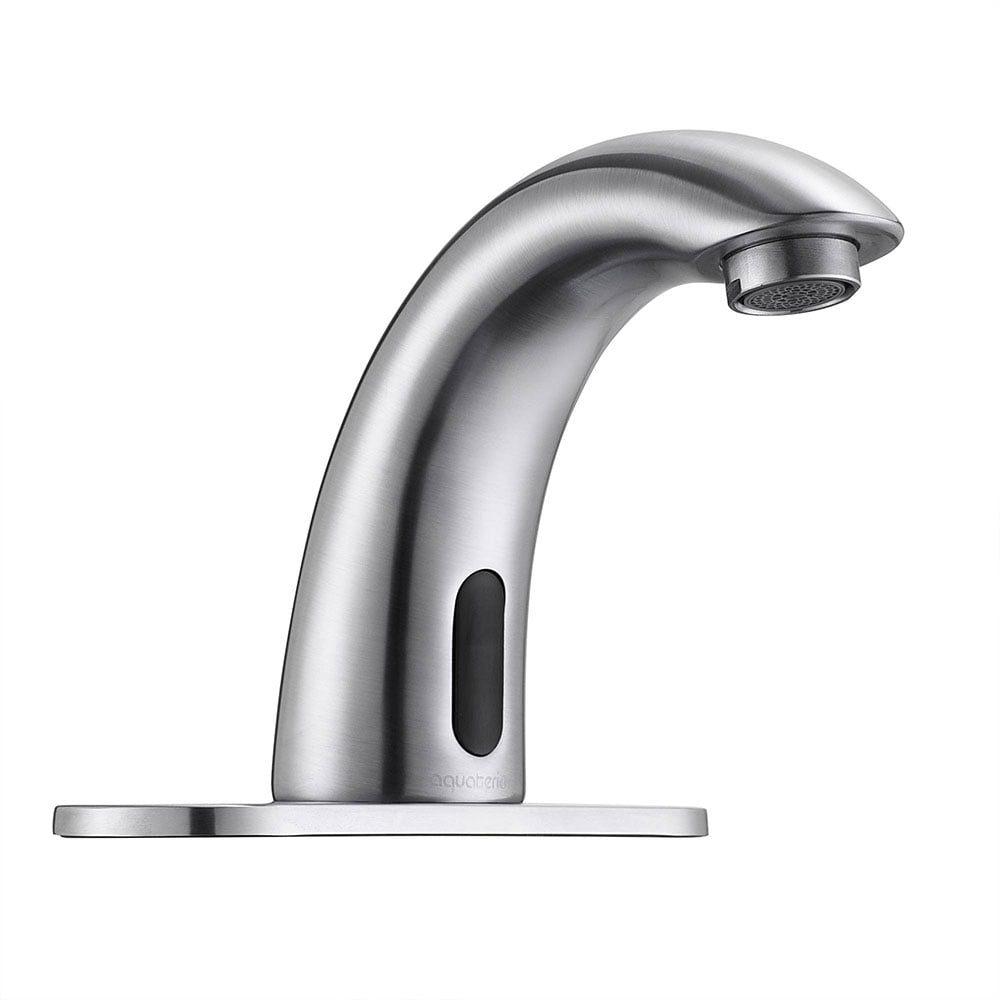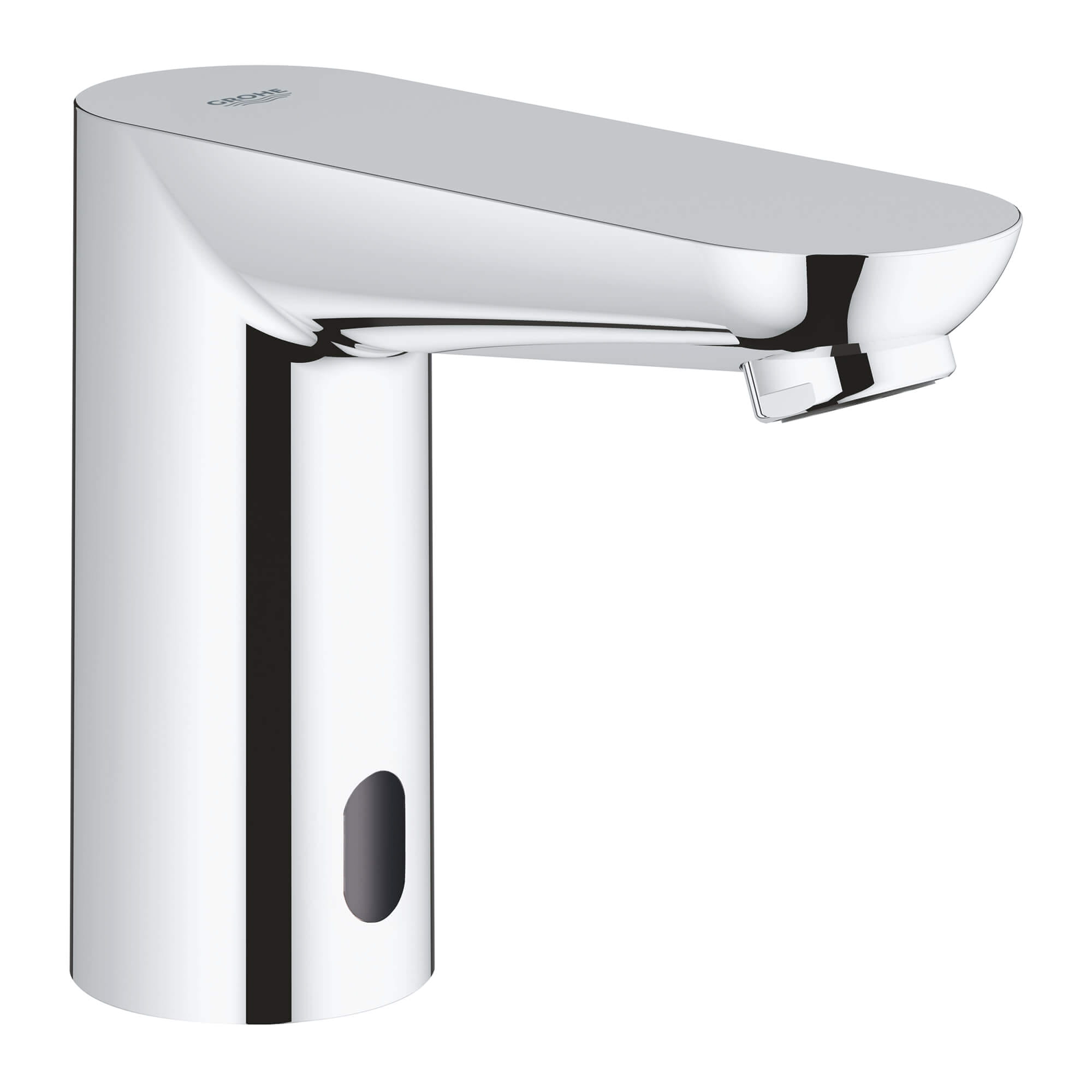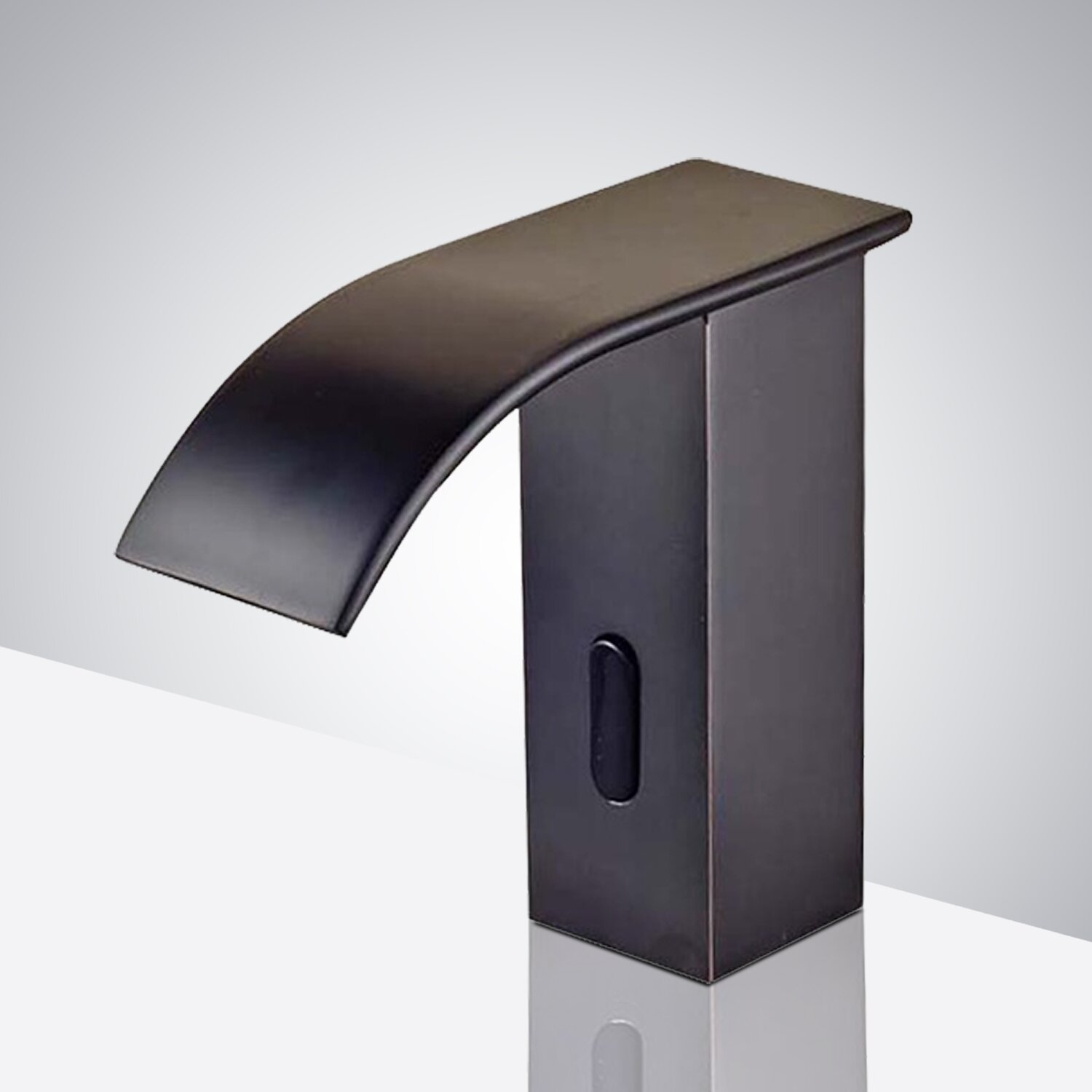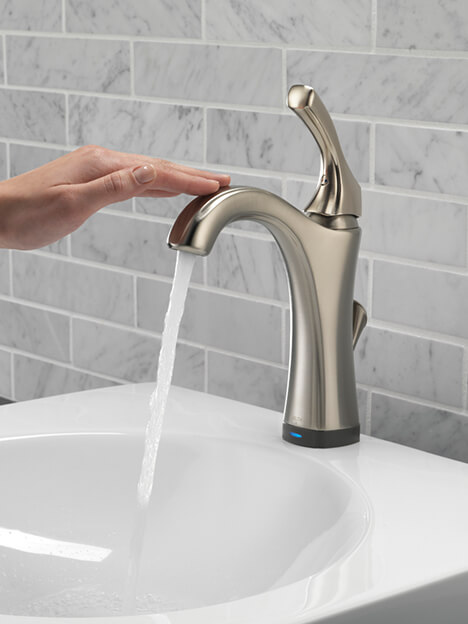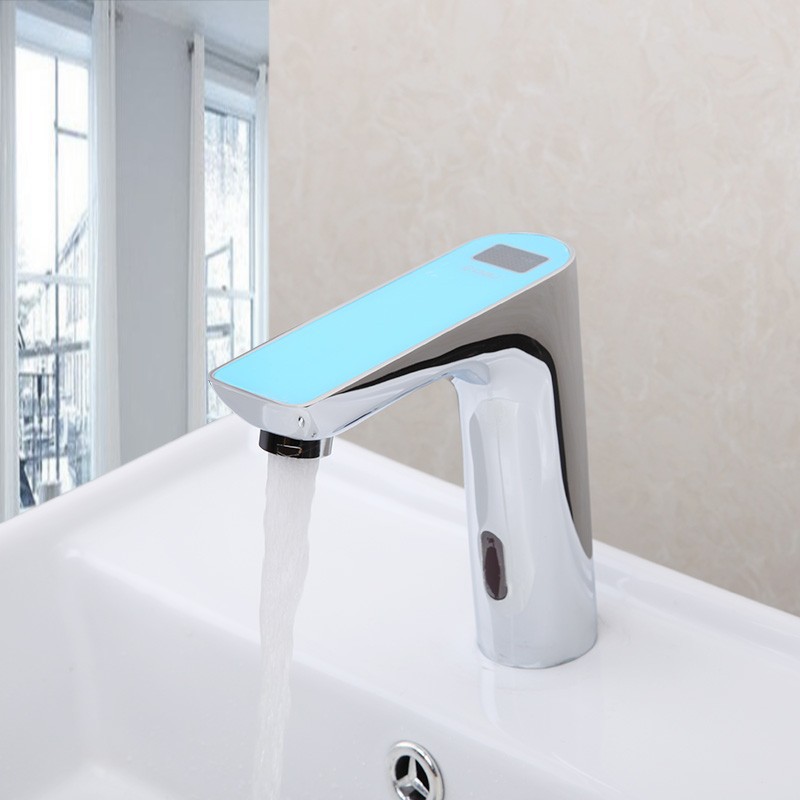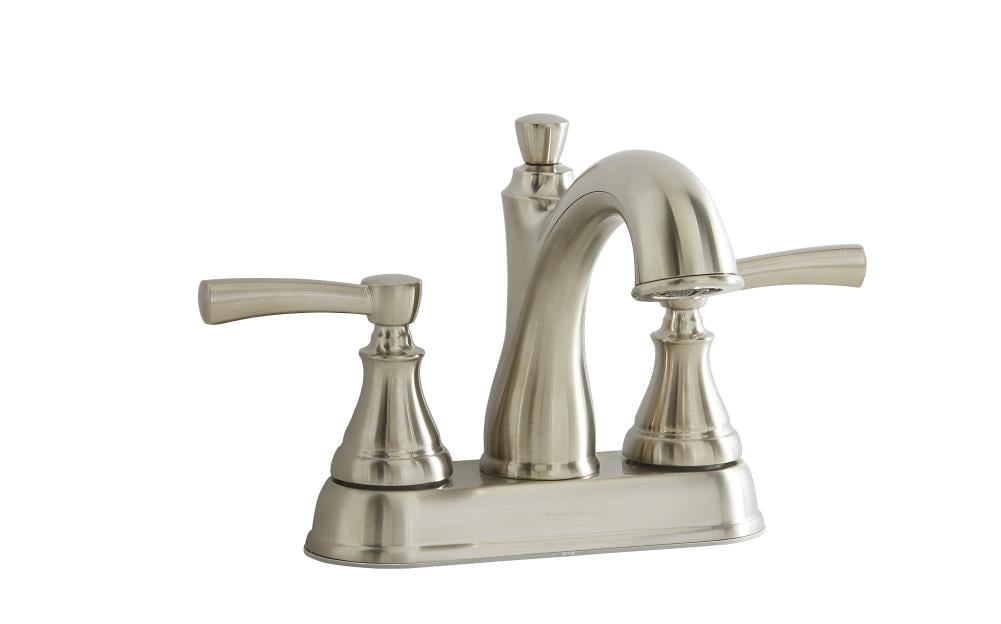What is a Touchless Bathroom Faucet?
Touchless bathroom faucets are no longer reserved for upscale commercial spaces; they are becoming common in homes due to their convenience, hygiene benefits, and sleek design. But what exactly is a touchless bathroom faucet? It’s a faucet that operates without the need to turn handles or knobs physically. Instead, these innovative faucets use sensors to detect motion, making hand-washing effortless. This modern technology isn’t just about luxury; it offers a practical solution for everyday life. Let’s break down what a touchless faucet is and how it can improve your bathroom experience.
- Automated Water Flow
At its core, a touchless faucet automatically controls the water flow. You simply place your hands or an object under the spout, and water begins to flow. When you move away, the faucet senses the absence of motion and turns the water off. This automation eliminates the need to touch the faucet, which reduces the spread of germs and makes hand-washing quicker. - Sleek, Modern Design
Touchless faucets are often designed with aesthetics in mind. They typically have sleek and minimalist designs that fit well with modern bathroom styles. The absence of handles gives these faucets a clean, streamlined look that adds a futuristic touch to any bathroom. This makes them a great choice for those who want their space to feel contemporary and clutter-free. - Sensor Technology
The magic behind the touchless faucet lies in its motion sensors. These sensors, usually infrared, detect when an object is near the faucet’s spout and trigger the water to flow. Some advanced models allow you to adjust the sensitivity of the sensors, ensuring that the faucet responds to specific hand movements or objects and conserves water by shutting off quickly when not in use. - Battery or Hardwired Operation
Most touchless faucets are powered either by batteries or through a hardwired connection to your home’s electrical system. Battery-operated faucets are easier to install but require occasional battery replacements. Hardwired faucets, on the other hand, eliminate the need for battery maintenance but may involve more complex installation. Both types provide seamless operation once set up. - Water Temperature Control
While touchless faucets lack traditional handles, they still allow you to control water temperature. Many models feature a separate dial or button to adjust the temperature to your preference. Some high-end faucets even offer presets or digital displays to customize temperature settings with ease. - Environmental Impact
In addition to convenience, touchless faucets also play a role in reducing water wastage. The sensor-driven mechanism ensures that water flows only when needed, which can significantly reduce overall water consumption. This makes these faucets an eco-friendly choice for those looking to reduce their environmental footprint.
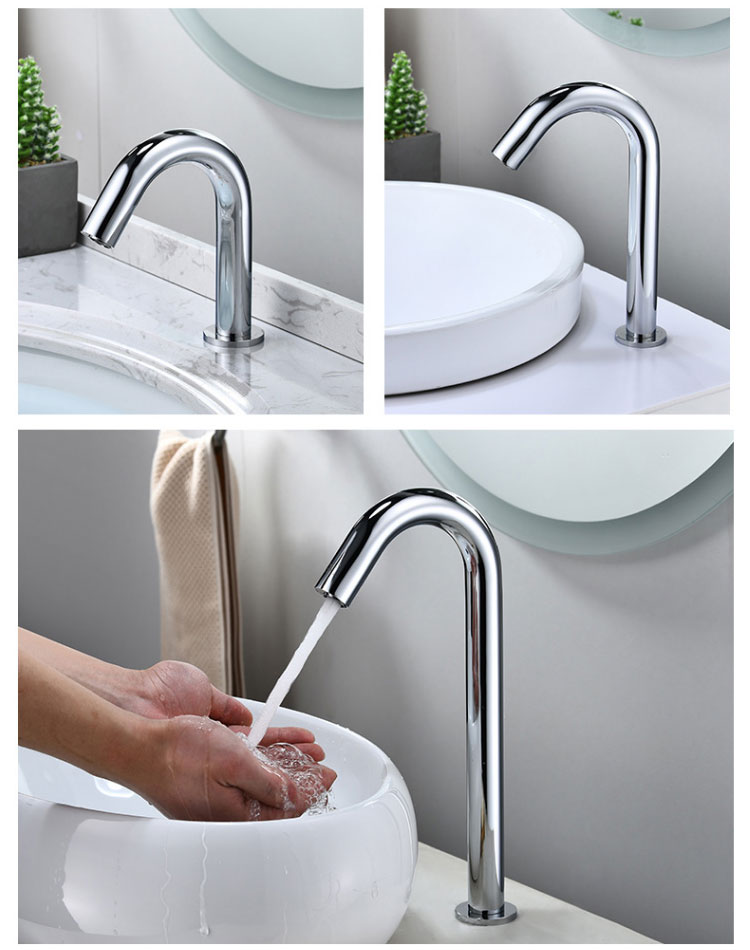
How Do Touchless Faucets Work?
Touchless faucets may seem like high-tech gadgets, but they operate on relatively simple principles. With the help of sensors, they automate water flow, offering a hands-free experience in both public restrooms and private homes. Whether you’re remodeling your bathroom or upgrading a fixture, it’s helpful to understand how these faucets function.
Motion Sensors Detect Hand Movement
The core of the touchless faucet’s functionality is its motion sensor, usually located near the spout. These sensors are often infrared, meaning they detect heat and motion. When you place your hands under the faucet, the sensor picks up your presence, sending a signal to open the valve and release water.
Solenoid Valve Controls Water Flow
Once the sensor detects your hands, it sends a signal to the solenoid valve. This valve is responsible for controlling the flow of water. The valve opens when a signal is received and closes when the signal stops. This mechanism ensures precise control over the amount of water that’s dispensed.
Battery or Electric Power Source
A touchless faucet requires power to operate its sensors and valves. This power is supplied either by batteries or through a direct electrical connection. Battery-powered faucets are more common in residential settings because they’re easier to install, while hardwired models are typical in commercial bathrooms.
Pre-set or Adjustable Water Temperature
Many touchless faucets are equipped with a temperature control system that allows users to set the desired water temperature. This is often done through a separate control lever or button, so the faucet doesn’t have to be touched to change the water temperature. Advanced models may even let you pre-set the temperature digitally.
Timed Water Shutoff
To prevent water wastage, touchless faucets are typically designed to shut off automatically after a certain period. This built-in feature is especially important for high-traffic areas, ensuring that water doesn’t run endlessly if the sensor malfunctions or a user forgets to remove their hands.
Hygienic and User-Friendly
The hands-free nature of the touchless faucet minimizes the risk of cross-contamination, making it a highly hygienic option. Its user-friendly design ensures that even children or the elderly can use it with ease, as it eliminates the need for physical dexterity to operate handles or knobs.
Benefits of Installing a Touchless Faucet
Installing a touchless faucet is more than just a modern upgrade; it brings a range of benefits to your bathroom or kitchen. From improved hygiene to convenience, these faucets can make daily life easier and more efficient. If you’re considering making the switch, here are some compelling reasons why a touchless faucet could be the perfect addition to your home.
Improved Hygiene
One of the main advantages of a touchless faucet is the improved hygiene it offers. Since you don’t have to touch the handles to turn the water on or off, there’s less opportunity for germs and bacteria to spread. This is especially useful in bathrooms, where surfaces can harbor bacteria from frequent use.
Water Conservation
Touchless faucets are designed to conserve water. They only activate when hands or objects are placed under the spout, and they automatically shut off when the hands are removed. This helps to prevent water waste, especially if someone forgets to turn off the faucet after washing their hands.
Convenience
Another benefit is the convenience of hands-free operation. Whether you’re in the kitchen with dirty hands or trying to wrangle kids in the bathroom, a touchless faucet makes turning the water on and off quick and easy. It’s a small change that can simplify your daily routines.
Reduced Wear and Tear
Since there’s no need to turn handles or knobs, touchless faucets experience less wear and tear over time. This means they often last longer than traditional faucets, which can become loose or damaged from frequent use. Investing in a touchless faucet can potentially save you money on repairs or replacements.
Modern Design Appeal
In addition to being functional, touchless faucets are often praised for their sleek, modern design. They offer a minimalist aesthetic that can enhance the look of your bathroom or kitchen. The clean lines and streamlined appearance are perfect for those looking to update their space with a contemporary feel.
Energy Efficiency
Many touchless faucets are designed to be energy-efficient. They typically use low-voltage power, whether from batteries or a direct electrical connection. This makes them an eco-friendly option that aligns with sustainable living practices, especially when combined with water-saving technologies.
Energy and Water Efficiency: Saving Resources with Touchless Technology
In today’s eco-conscious world, the ability to conserve water and energy has become a priority for many homeowners. Touchless faucets offer a smart, efficient way to save both resources without sacrificing convenience. These high-tech fixtures are designed not just to modernize your home, but also to help reduce your environmental impact. Here’s how touchless faucets can contribute to water and energy conservation.
Automatic Shutoff Prevents Wastage
One of the biggest ways touchless faucets help conserve water is through their automatic shutoff feature. Since the faucet turns off as soon as you remove your hands, there’s no risk of leaving it running unintentionally. This is especially useful for households with children or anyone who tends to forget to turn off the tap.
Water Flow Control
Many touchless faucets are designed with a flow rate that limits the amount of water dispensed per minute. This controlled water flow ensures that you’re using only the amount of water necessary for tasks like washing hands or rinsing items. Over time, this can add up to significant water savings, especially in busy households.
Energy-Efficient Power Options
Whether powered by batteries or a hardwired connection, touchless faucets typically consume very little energy. Battery-operated models, for instance, can run for months on a single set of batteries. Some newer models are even equipped with energy-efficient technology that minimizes power consumption during use.
Reduced Hot Water Usage
Touchless faucets can also help reduce your hot water usage. Since the water flow is timed and controlled, you’re less likely to run hot water unnecessarily, which can lower your energy bills. By using only the amount of hot water needed for specific tasks, you conserve energy in heating water, too.
Eco-Friendly Design
Many touchless faucets are designed with sustainability in mind. Some models are made from eco-friendly materials or are certified by water-saving organizations like WaterSense. Choosing a touchless faucet with these features ensures you’re making an environmentally responsible choice for your home.
Long-Term Savings
Beyond the immediate benefits, the water and energy efficiency of a touchless faucet can lead to long-term savings on utility bills. While the initial investment may be higher than a traditional faucet, the reduction in water and energy usage can offset these costs over time, making it a smart financial and environmental choice.
Key Features to Look for in a Touchless Faucet
Choosing the right touchless faucet for your home can be a bit overwhelming with so many options on the market. However, there are a few key features that can help you narrow down your choices and find the faucet that best suits your needs. Here’s a list of essential features to consider when shopping for a touchless faucet.
Sensor Sensitivity and Placement
One of the most important features to look for is the sensor’s sensitivity and placement. You’ll want a faucet with sensors that accurately detect hand movement without being too sensitive. Some models allow you to adjust the sensor’s sensitivity, which can help reduce accidental activations.
Water Temperature Control
Not all touchless faucets come with easy temperature control, so it’s important to choose one that offers a convenient way to adjust water temperature. Some faucets have separate levers for hot and cold water, while others feature digital or preset temperature settings.
Flow Rate
A faucet’s flow rate, typically measured in gallons per minute (GPM), is an important factor in water conservation. Opt for a faucet with a lower flow rate if you’re looking to reduce water usage without sacrificing performance. Many eco-friendly models are designed with flow restrictors to help limit water consumption.
Power Source Options
Touchless faucets can be powered by either batteries or hardwiring. Battery-powered faucets are easier to install, but you’ll need to replace the batteries periodically. Hardwired models are more permanent and don’t require battery replacements, but they might need professional installation. Decide which option is more convenient for your household.
Durability and Material
The material of the faucet plays a significant role in its longevity. Look for faucets made from high-quality, corrosion-resistant materials such as stainless steel or brass. These materials not only ensure durability but also provide a sleek, polished look.
Warranty and Support
Finally, make sure the faucet comes with a good warranty and customer support. A strong warranty indicates the manufacturer’s confidence in the product’s quality and durability. It’s always a good idea to check reviews and customer feedback to ensure you’re purchasing from a reputable brand that offers reliable support.
Touchless Faucets: Hygiene and Safety Advantages
The hygiene benefits of touchless faucets cannot be overstated. Especially in shared or public bathrooms, reducing the need to touch frequently used surfaces is a key factor in preventing the spread of germs and bacteria. Here’s a detailed look at the hygiene and safety advantages of installing a touchless faucet in your home or business.
Prevention of Germ Spread
Traditional faucets require users to turn handles before and after washing their hands, which means touching surfaces that may be contaminated. With a touchless faucet, there’s no need to touch any part of the fixture, greatly reducing the risk of spreading germs. This feature makes it ideal for homes with young children, elderly family members, or anyone with a compromised immune system.
Improved Bathroom Cleanliness
Since touchless faucets reduce the need to touch the faucet after hand-washing, there’s less buildup of grime and residue around the handles. This makes bathroom surfaces cleaner overall and reduces the frequency of deep cleaning required to maintain a hygienic environment.
Reduced Cross-Contamination
In kitchens, touchless faucets help minimize the risk of cross-contamination. When handling raw meat or other potentially harmful substances, you can wash your hands without contaminating the faucet, ensuring a safer food preparation environment. This makes touchless faucets a popular choice for health-conscious households.
Hands-Free Safety for All Ages
The hands-free operation of a touchless faucet makes it easier and safer for everyone to use, especially for young children, the elderly, or individuals with limited mobility. There’s no need to twist knobs or turn levers, which can be difficult for people with arthritis or other physical limitations.
No Scalding Risk
Many touchless faucets come with built-in safety features like preset temperature controls or anti-scald devices, which prevent water from getting too hot. This is especially useful in households with children or elderly members who may be more sensitive to hot water.
Healthier Public Restrooms
In public restrooms, touchless faucets contribute to a healthier environment by reducing touchpoints. With fewer shared surfaces to contact, these faucets help to curb the spread of viruses and bacteria in high-traffic areas, making them a valuable feature in schools, hospitals, and businesses.
Installation and Maintenance Tips for Touchless Faucets
Installing a touchless faucet may seem daunting, but with the right approach, it can be a smooth process. These faucets offer both functionality and style, but like any fixture, they need proper maintenance to ensure long-lasting performance. If you’re planning to install one in your home or need tips on keeping it in great shape, here’s what you need to know.
Choose the Right Power Source
When installing a touchless faucet, you’ll need to decide between a battery-powered or hardwired model. Battery-powered faucets are easier to install since they don’t require electrical work, but you’ll need to change the batteries periodically. Hardwired faucets are more permanent and don’t require battery replacements, but the installation might require a professional.
Check Compatibility with Existing Plumbing
Before purchasing a touchless faucet, make sure it’s compatible with your existing plumbing setup. Check the water pressure requirements, as some touchless faucets perform best within specific pressure ranges. If you’re unsure, consult a plumber to confirm that your system can support the new fixture.
Install with Proper Alignment
When installing the faucet, it’s important to align the sensor properly to ensure it detects hand movements accurately. The sensor should be positioned at a height and angle where it can easily detect the presence of hands but won’t be triggered by objects or reflections.
Test the Water Temperature Settings
After installation, make sure to test the water temperature settings. Some touchless faucets come with preset temperature controls, while others allow you to adjust the temperature manually. If your faucet has a temperature control lever, ensure it’s easy to access and works properly to avoid scalding risks.
Regularly Clean Sensors
Over time, the sensors in your touchless faucet can accumulate dirt and grime, which may affect their performance. To maintain optimal functionality, regularly clean the sensor area with a soft cloth and mild cleaner. Avoid using harsh chemicals that could damage the sensor or faucet finish.
Replace Batteries as Needed
For battery-powered models, it’s important to keep an eye on the battery life. Most faucets will provide a signal, such as a flashing light, when the batteries are running low. Always use the recommended battery type and replace them promptly to avoid interruptions in functionality.
Chrome Automatic Sensor Hands Free Touchless Bathroom Faucet Sink Mixer Tap eBay
Delta Faucet Single Hole Bathroom Faucet, Touchless Bathroom Faucet Chrome, Commercial Bathroom Faucet, Chrome 590LF-LGHGMHDF
Aquaterior Automatic Sensor Bathroom Faucet Touchless Mixer for Undermount Sink
Glacier Bay Modern Single Hole Touchless Bathroom Faucet in Chrome
Touchless Bathroom Faucet With Delta® Touchu2082O.xt®: Delta Faucet
Juno New Digital Display Electronic Motion Sensor Bathroom Faucet
Related Posts:
- How To Repair A Delta Single Handle Bathroom Faucet
- Delta Grail Bathroom Faucet
- Best Place To Buy Bathroom Faucets Online
- How To Change Bathroom Faucet Knobs
- Bathroom Faucets Cheap Price
- Bathroom Faucets San Diego
- Kohler Fairfax Single Hole Bathroom Faucet
- Moen Vestige Bathroom Faucet
- Modern Chrome Bathroom Faucet
- White Cross Handle Bathroom Faucet
